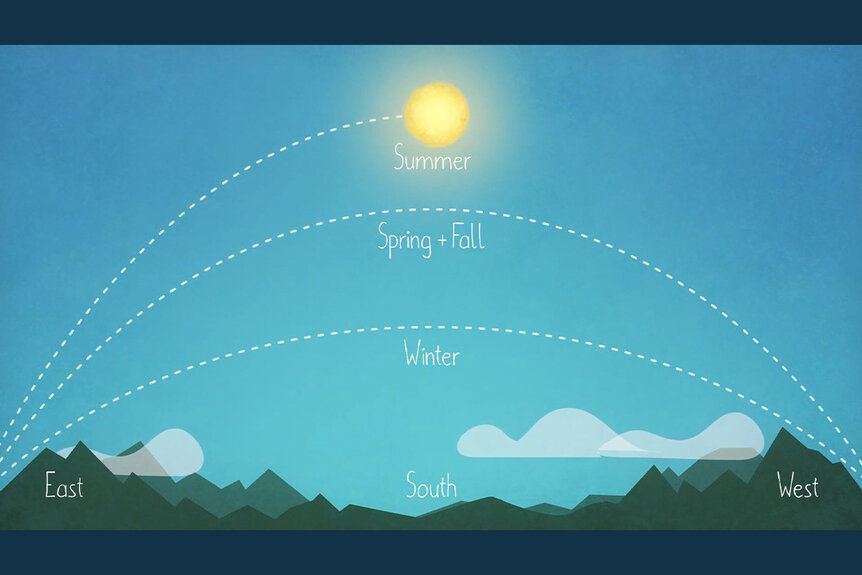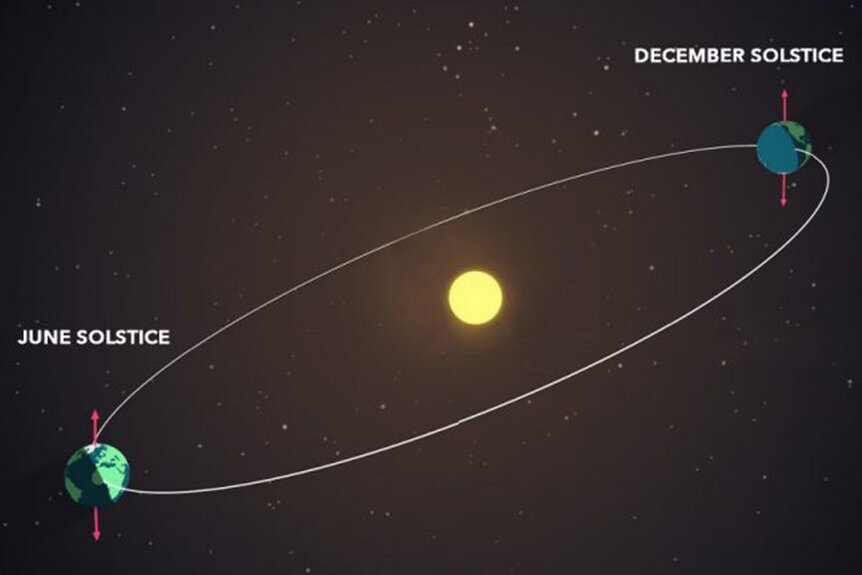Create a free profile to get unlimited access to exclusive videos, sweepstakes, and more!
What Is the Summer Solstice, Astronomically Speaking?
Just a step in the cosmic dance.

The Age of Summer is upon us and that means blue skies, long days, and plenty of sunshine. In Bill Keily’s semiautobiographical coming of age story, Age of Summer (streaming on Peacock!), a Minnesota transplant tries to find his place in the culture of Hermosa Beach, California, in the Summer of 1986. There are challenges aplenty, as is usually the case when you’re an awkward teenager in a new town, but Age of Summer remembers that even when things aren’t going your way, there’s something magical about summertime.
In fact, the summer solstice has been observed around the world since before recorded history and has an important place in our cultural and astronomical understanding. The summer solstice occurs twice a year, once each for the Northern and Southern Hemispheres. In the Northern Hemisphere, the summer solstice is fast approaching and will occur on June 21, 2023. The Southern Hemisphere will have their summer solstice roughly six months later, on December 22, 2023.
Summer Solstice Throughout History
The summer solstice has been observed by various cultures, all over the world, for thousands of years. Some of our oldest structures, calendars, and even systems of writing relate to tracking astronomical phenomena as a way of marking time. We know that humans have recognized and observed the summer solstice since at least the stone age, often by throwing celebrations and festivals.
RELATED: The Shortest Day
In Sweden, for instance, Midsummer is one of the most important cultural holidays. In China, they celebrate the Dragon Boat Festival, and the summer solstice is marked by the festival of Tiregān in Iran. In some Greek cultures, the summer solstice marked the beginning of the new year and triggered a one-month countdown to the Olympics. There are as many solstice observations as there are groups of people, many of which are still celebrated today.
The name for the summer solstice comes from the Latin words “sol” for the Sun and “stitium,” meaning still or stopped. Ancient peoples noticed that as the year progressed, the path of the Sun moved northward in the sky (or southward, in the Southern Hemisphere), lengthening the days. Then, at one point in the year, its climb in the sky stopped and reversed course.
Ancient cultures recognized the significance of this annual change and used it to mark important agricultural days or predict seasonal weather patterns. In Egypt, the solstice corresponds with the rising of the Nile, and its observance likely helped with predicting annual floods. Modern astronomy, with its telescopes, spectrometers, and orbiting spacecraft was still thousands of years away, but humanity was already coming to grips with the movements of the stars and our place within them.
What Can Science Tell Us About the Solstice?
Understanding the summer solstice is really a matter of perspective. Early humans were working with an incomplete knowledge of the planet they were standing on, so it makes sense they might have made some miscalculations. Today, we’ve got a pretty good idea of what’s going on.
Because the Earth’s orbit around the Sun is elliptical and because the planet rotates on a tilt, the amount of sunlight hitting the planet, and the amount of sunlight hitting particular spots on the planet, change throughout the year. That’s how we get the seasons.
Culturally, the summer solstice often occurs during the summer season (kids have already been out of school for a week or two in many places), but astronomically, the solstice marks the beginning of summer. The summer will last until the autumnal equinox, which will occur September 23, 2003.
RELATED: The future history of the Sun
The Earth is tilted roughly 23.5 degrees off true, and that means that sometimes your part of the planet is tilted toward the Sun or away from it by 23.5 degrees. The summer solstice marks the point along the Earth’s orbit when one hemisphere or the other is maximally tilted toward the Sun. As a result, the Sun’s path across the sky is the longest it will be all year, resulting in longer days and shorter nights.
The Earth’s tilt is also why you may have noticed two special latitudinal lines on a map. The Tropics of Cancer and Capricorn lie at 23.5 degrees and negative 23.5 degrees respectively. They mark the places where the Sun is directly overhead at the summer solstice. If you want the perfect summer day with the perfectly placed noontime Sun, those lines are where you want to stand on the surface of the Earth.
When the summer solstice occurs on June 21, we’ll be experiencing maximum summer. After that, it’s a slow downhill trod toward winter. Then the whole cycle starts over again as the world keeps turning.
Catch Age of Summer and a bunch of other summertime flicks, streaming now on Peacock!





























